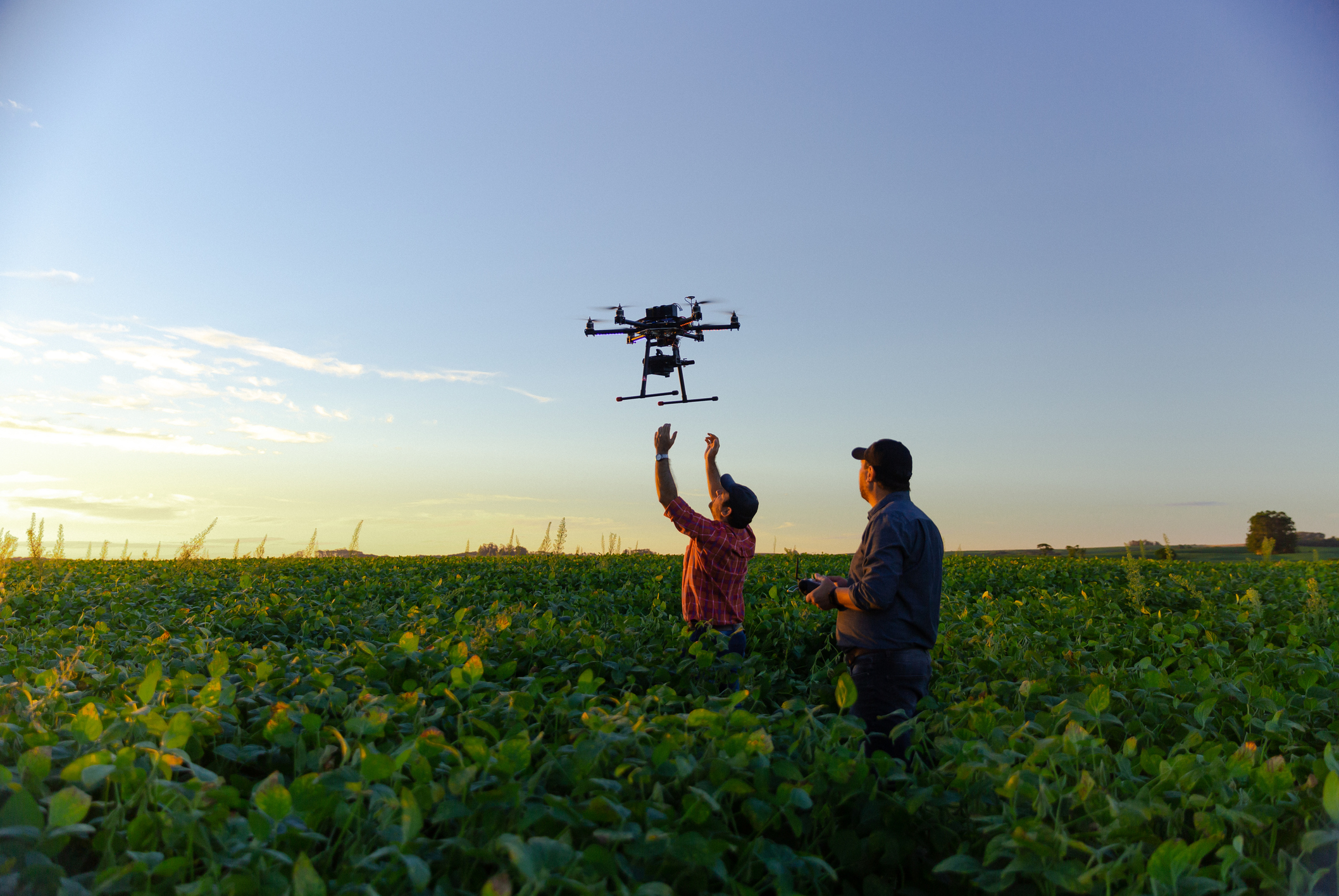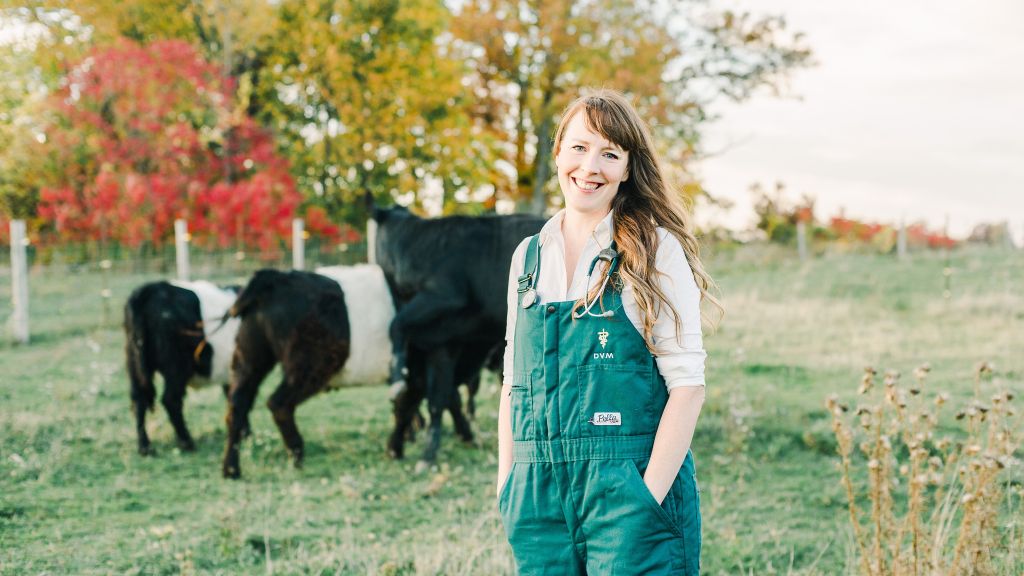Published November 27, 2023 • 5 Min Read
“There’s so much happening in agriculture throughout Eastern Ontario,” says Andrew Staniforth, the Vice President of Agriculture in Ontario North and East Region. “It’s an exciting time to be here.”
In fact, as Staniforth and his new dedicated-to-agriculture team of experts point out, farmers and agricultural operations in the region are driving some of the most innovative changes in the country.
“There are individuals trying to build profitable micro farms and others testing the latest and most advanced tech to see how they can improve yields,” he notes. “Economic and environmental sustainability is at the forefront of what a lot of folks are doing.”
One example of this is the increased use of biodigesters in the region. Nicole Clement, Director of Agriculture, helped a client install one on their farm over 15 years ago. The client was one of the first to invest in the innovative technology – which converts cow manure into natural gas and eventually electricity – in Canada.
“There were 15 farms that followed suit in Eastern Ontario,” she says. At the time, what her client was doing was considered groundbreaking.
“There was a lot of uncertainty. There were few companies doing the installation of biodigesters and some went bankrupt. It took a lot of hard work and hours of dedication to get the first one up and running, but that’s what farmers in this region do – they work hard and know they have to help reduce emissions however possible.”
This drive has led to a bit of a boom in organic farming. Clement says several farms have started to convert to organic cash crops (some as large as 1,000 acres) while poultry and dairy farmers are making moves to install technology like reverse osmosis and water treatment systems. This reduces the amount of chemicals in the water that they use on their land and to feed animals. Wood pellet furnaces are also becoming more commonplace.
Scott McCaig, a Relationship Manager, Commercial Agriculture and Agri-Business in the Kawartha and Quinte areas, is seeing the same trends in the market that he’s responsible for. Regenerative agriculture is taking off with cash crops booming. One of McCaig’s clients has a farm that’s only 500 to 600 acres but is “using it to figure out how to get the greatest yields with the lowest environmental impact possible… this client is always trying the next best thing… and what he’s learning is going to be shared with farmers across our region and beyond.”
McCaig adds there’s a diverse array of products that are now being produced in the region, busting the myth that area farmers only deal in dairy. Mushrooms, cranberries, apples, turkey, goat, celery, beets, radishes, parsnips, and chicken are all produced here. Farmers have also started to grow more items that immigrants are prone to eat like veal, cabbage, and bok choy. Even crickets – something experts agree will be coming to plates near humans in the near future – are being farmed in the region.
That’s why McCaig – and his colleagues – believe it’s critical for farmers to start telling their story.
“The average person is now five to six generations removed from the food on their plate… we have to tell the whole story of what’s happening in agriculture, so people realize how critical we are to their health and well-being.”
Beverly Agar, a Senior Relationship Manager, Agriculture and Agri-Business in the Barrie and Simcoe County area, agrees. She and her family have been part of the farming community since she was a child. She and her husband even have a farm just north of Barrie. For her, one of the biggest things she’s seeing in the region – beyond the increased use of sustainable farming practices and the diversification of crops being planted – is consolidation.
Today, there are much larger agricultural operations in the area than a few decades ago. Micro farms exist, but the number of middle-of-the-road sized farms are dwindling. However, those leading bigger operations are bringing new technologies to the area that are making farming more efficient.
“A lot of people are using larger equipment so they can harvest faster,” she says. “We’re also seeing an increased use of legal migrant workers to help with farm maintenance and harvest. All of this is making farming more economically viable.”
To the latter point, Agar adds these legal migrant workers return to their home country each season, bringing with them the lessons they learned about farming in Ontario – including how to do it sustainably. She knows of one legal migrant worker who saved up enough money to buy his own operation in Canada. Today, he’s a celery producer and was able to move his family from Trinidad to Ontario.
“We have always been a very active and supportive farming region,” she says. “Farmers like to get together. We like to share ideas. We overcome challenges – including the increasing volatility of Mother Nature – together. We produce so much.”
That’s why Staniforth says he and his team want to do all they can to support farmers within our communities.
“There are so many things happening in this region that are leading the way for the future of food production,” he says. “There are a lot of things people can benefit from. We want to tell that story and help farmers do more together.”
This article is intended as general information only and is not to be relied upon as constituting legal, financial or other professional advice. A professional advisor should be consulted regarding your specific situation. Information presented is believed to be factual and up-to-date but we do not guarantee its accuracy and it should not be regarded as a complete analysis of the subjects discussed. All expressions of opinion reflect the judgment of the authors as of the date of publication and are subject to change. No endorsement of any third parties or their advice, opinions, information, products or services is expressly given or implied by Royal Bank of Canada or any of its affiliates.
Share This Article






